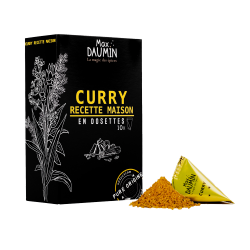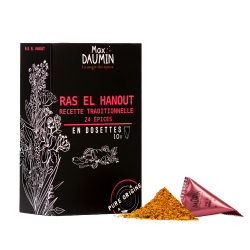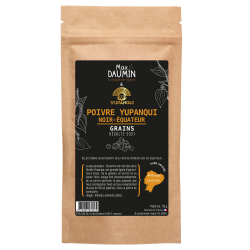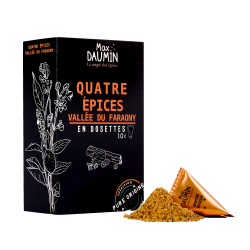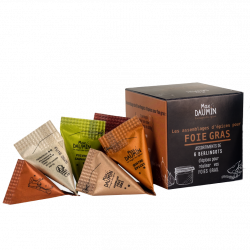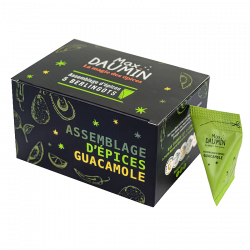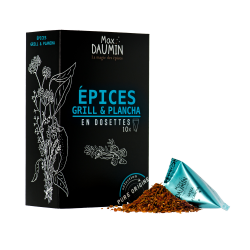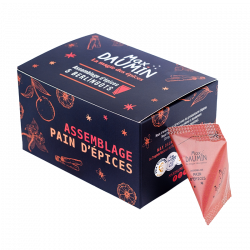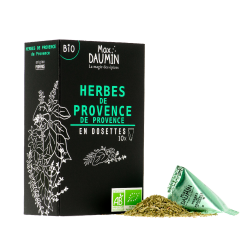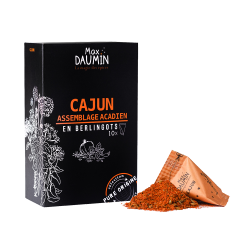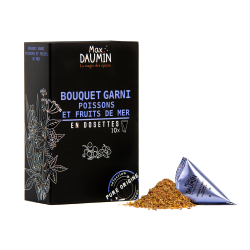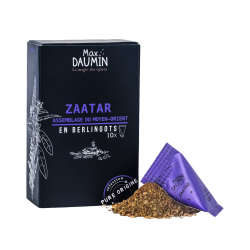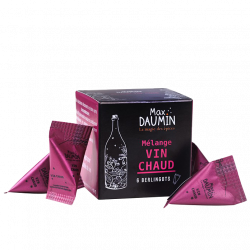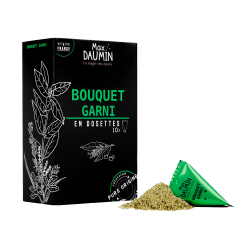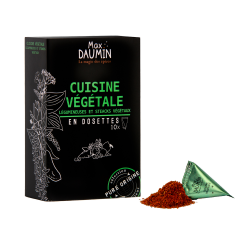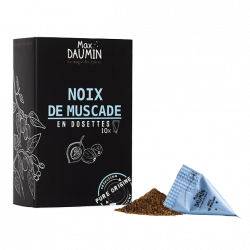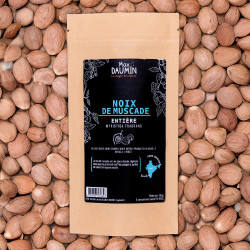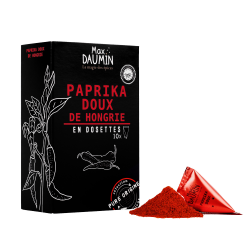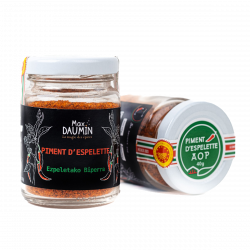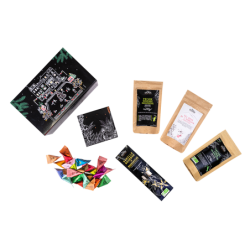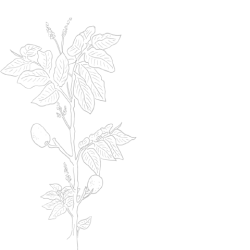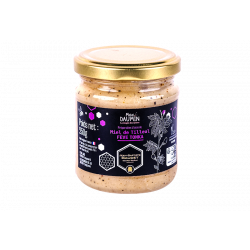- Rupture de stock
Curry Intense Homemade Recipe
Three varieties of pepper make up this intense "house recipe" curry: Ancho pepper for its sweet notes, Guajilo pepper for its spiciness, sweet paprika from Hungary for its flavors of peppers. Six spices are then added to compose our palette of flavors.
It is a present curry, spicy but whose power is quite acceptable. It could be ranked 3 on the Scoville scale. A little less hot than Espelette pepper.
All the power of this curry can be discovered inside the berlingot.
-
Net weight : 21g
-
Composition : Coriander, Cumin, Pepper, Turmeric, Onion, Ancho Pepper, Paprika, Oregano, Bird Pepper
-
Dimensions :
-
Recyclable box and berlingots : Sorting paper / cardboard


History
Plant & perfume
Curry is a complex combination of spices and herbs. There are hundreds of different curry blends depending on their origin and use. Curry is therefore not a single spice. But two plants nevertheless come close to it and evoke curry:
A variety of immortelle: the silver immortelle (Helichrysum italicum) whose flowers and leaves are reminiscent of curry. And the Kaloupilé (Murraya koenigii) is a tree whose leaves are used, which have a smell reminiscent of curry. We then speak of Kari or Curry leaves. They are widely used in Asia, particularly in India, Vietnam and Thailand. They are also found in Reunion or Mauritius.
Our Curry Intense is an "in-house" blend of 9 spices. It includes Turmeric, Cumin, Coriander, Paprika PDO, Pepper, Oregano, Onion, Ancho Chili, Guajillo Chili.
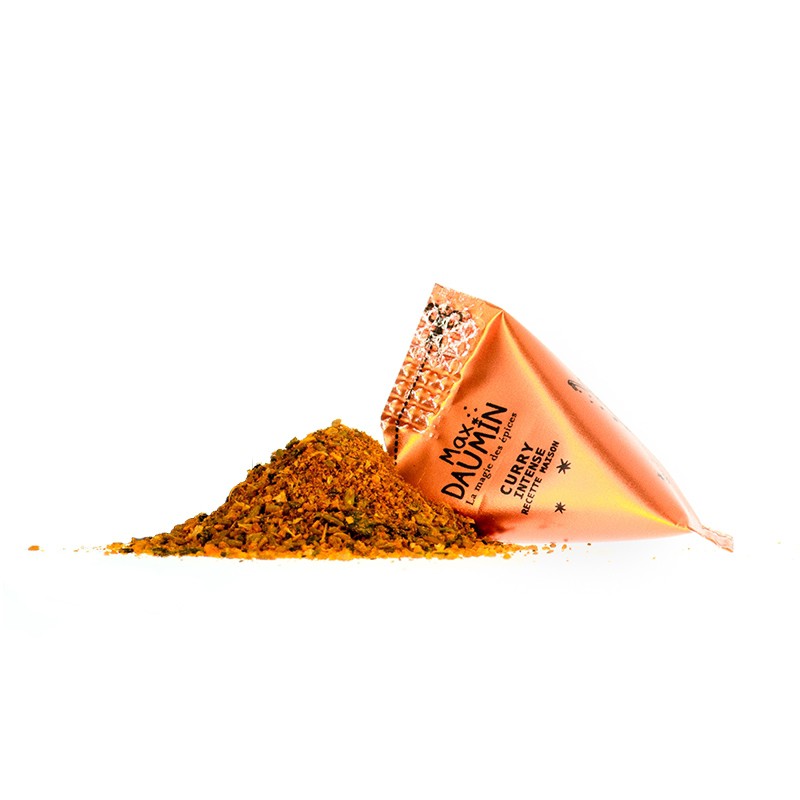

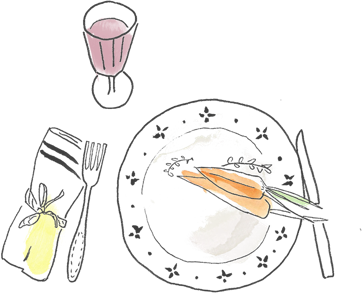
Benefits
Cooking and Virtue
Curry, as is often the case with spices, needs a vector for diffusing its flavours. Fats are these vectors and spread all the flavor of a spice. It is therefore advisable to use curry as an infusion with meat broth, cream, coconut milk, sauces, oil or butter. Put it at the beginning of your preparation and if necessary rectify according to your taste at the end of cooking with curry again or turmeric, ginger, pepper and or chilli!
It goes very well with meat, fish or vegetables.

Origins
A long journey
The term curry is a deformation by the English of the term "kari" in Tamil which means sauce. Originally from southern India, there are nevertheless traces of similar spice blends in the Indus Valley more than 2000 years BC. The first printed recipe for a curry was published in 1747 by Hannah Glasse. However, it only consisted of pepper and coriander. The 4th edition introduces turmeric and ginger. It was called "currey".
This mixture was then extended in the 19th century to the Caribbean by Indian workers in the British sugar industry. It finally spread to the United States and then to the Western world, becoming a benchmark in spice blends. There is not just one curry but hundreds and hundreds!


Frequently asked questions

You might also like

16 other products in the same category:

Customers who bought this product also bought:











